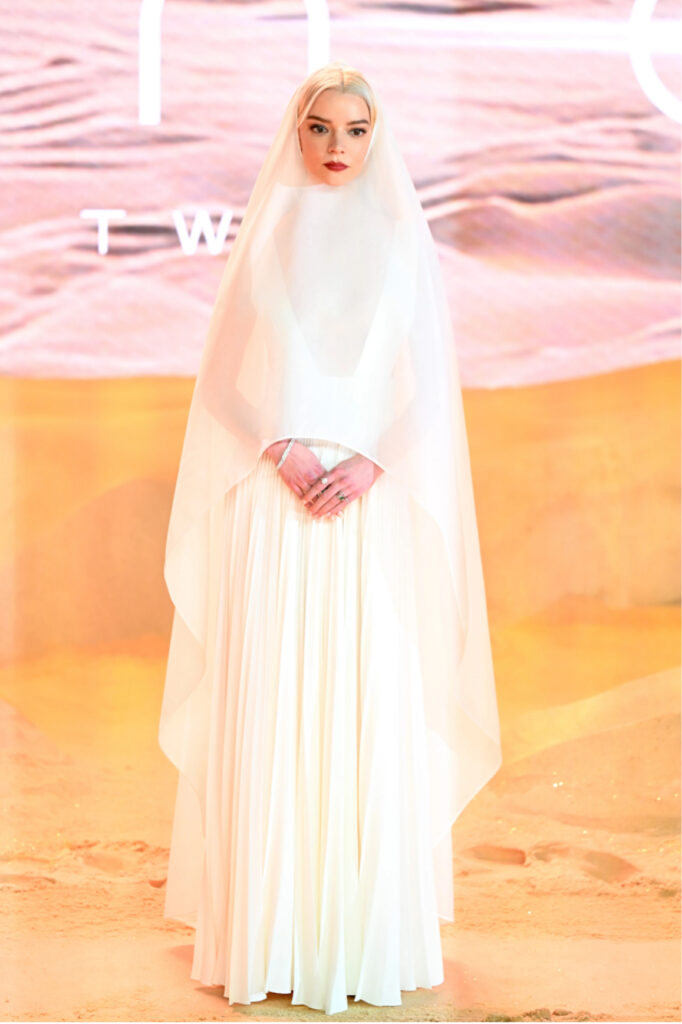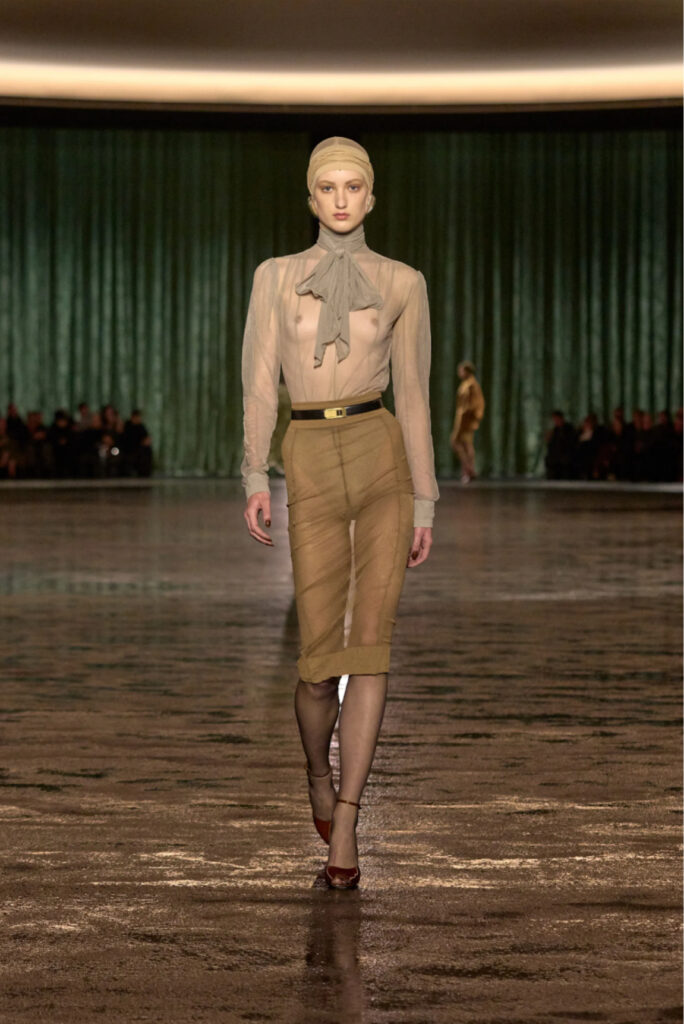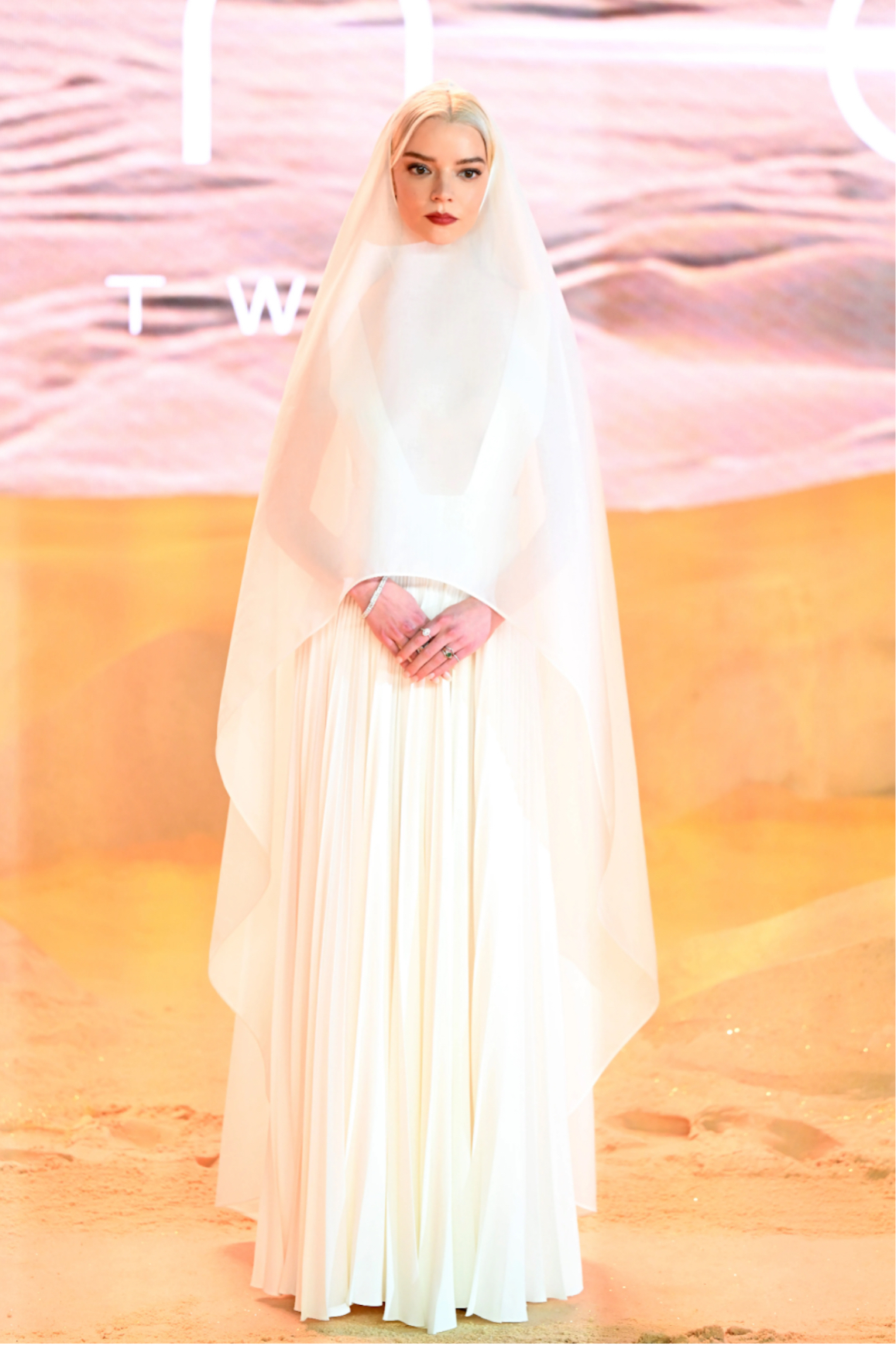From Anya Taylor-Joy’s Dune 2 premiere look to Saint Laurent’s latest collection, Western fashion designers and public figures are showing us their harmful takes on Eastern cultures by manipulating Eastern values and traditions into false Westernized ideas. Is it a trend, or a deeply rooted systematic problem?
Anya Taylor- Joy’s Dior look for the “Dune 2” premiere received backlash from many fashion enthusiasts over its similarity to a burka, an ethnic Muslim veil and modest dress. Taylor-Joy’s dress was considered artistic and fashionable while Muslim women struggle to freely dress modestly and are often thought of as oppressed. The use of veils in the fashion industry for art and beauty makes you wonder whether the issue was ever the veil, or if it was the skin color of the person wearing it.

Anya Taylor-Joy for the Dune 2 Premiere wearing Dior. Image by Variety.
Not too long after, Saint Laurent released their newest collection featuring veiled women wearing sheer tops. All of the models had their hair fully covered but exposed their bodies in an attempt to create exotic, sexualized looks. i-D shared the collection and commented; “can purity be provocative?” and described it as “unapologetically sexy.” Modesty and covering is meant to do the exact opposite of that. Women dress modestly to take control of their bodies and avoid being sexualized and objectified. Taking that power away from women by fetishizing modesty is unacceptable and should not be celebrated as a form of art.

Saint Laurent Fall 2024 Ready-to-Wear Collection. Image by Vogue.
Western fashion designers have continuously altered Eastern values and the meaning of modest wear in fashion with no regard to the negative effects such harmful takes would cause for Muslim and modest women. This depiction of Eastern cultures was backed up by Edward Said in a book discussing the theory of Orientalism. Orientalism is the stereotypical, problematic, and offensive view the West perceives Eastern cultures. Western fashion designers and professionals also don’t care to speak up for Muslim women or acknowledge the lack of their freedom to dress, but have no problem using their white privilege to dress like them. As mentioned by the New Lines Magazine, “Dior, one of France’s most famous fashion houses, is happy to drape a Hollywood actress in a simulacrum of Islamic clothing, while real Muslim women in France are fined for wearing similar items.” It is time to give credit where credit is due, respect other cultures and beliefs, and consider using such privileges to help those who aren’t as privileged to have the opportunity to also enjoy and celebrate fashion.



























